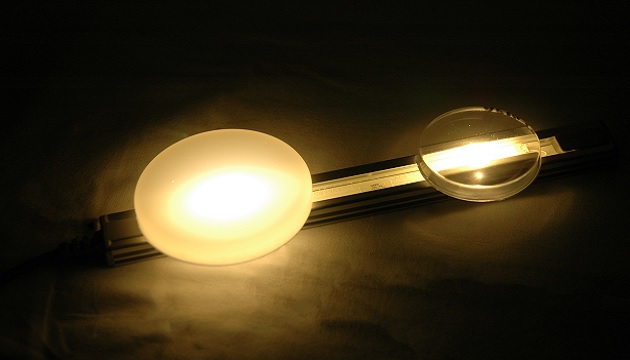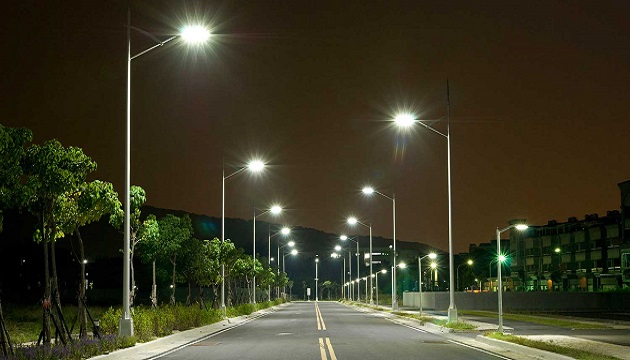The LED market is one of the fastest growing sectors within the electronics industry, expected to grow into a $70 billion industry by 2020; rising from 18% to 70% market share of the global lighting market in just over 5 years. With an ever-increasing number of potential uses, LEDs are now present in all types of lighting, signage and domestic appliance products, to name just a few. In offering alternatives to halogen, incandescent and fluorescent lighting systems for both interior and exterior applications, the growth of the LED lighting market alone is impressive. Such growth is attributed to the advantages LEDs offer over traditional lighting forms in terms of adaptability, lifetime and efficiency.
Specially designed and formulated chemical products are widely used in the electronics industry for a vast array of applications. Whether it is during PCB manufacture or for the protection of components or complete devices, such products have become an essential factor in ensuring the performance and quality of electronic devices. Specifically, in LED applications thermal management, conformal coating and encapsulation resin products can be used to assist Design Engineers in protecting LED systems in a variety of conditions.
Due to the design freedom that LEDs offer, applications are becoming more diverse and challenging and as such, aesthetic results must be achieved in conjunction with the consideration of reliability and lifetime of the product. In addition, specialty chemical products can also be used as part of the design for cosmetic reasons as well as helping to provide key functional improvements such as increased efficiency and reduced energy consumption. Design of the LEDs also allows much more freedom of application, interface materials are applied in such thin films that they account for virtually no weight or volume additions to the unit but still maximise the performance.

Performing when the heat is on
Although LEDs are considerably more efficient than traditional lighting forms, they still produce some heat. This heat can have an adverse effect on the LED and must, therefore, be managed to ensure the true benefits of this technology are realised. Thermal management is an area where specially formulated chemical products are utilised to enhance the performance and lifetime of LED systems. Colour temperature is not only affected by the protection media or surrounding environment, it can also be affected by the temperature at which the LED operates. For example, with white light, an increase in operating temperature of the LED could lead to a ‘warmer’ colour of light being emitted. In addition, if a variance in die temperatures is present across LEDs in the same array, a range of colour temperatures may be emitted, thus affecting the quality and cosmetic appearance of the device.
LEDs themselves are very efficient but they can still be pushed further and use even less energy, this is one of the key goals in the industry and thermal management products can significantly help with this. For instance, LEDs are far less efficient when operating at higher temperatures, which significantly reduce the life of the LED. Maintaining the correct die temperature of the LED not only extends the life but also leads to more light being produced and consequently, fewer LEDs may be required to achieve the desired effect. Thermal interface materials are used between the PCB and the heat sink in order to dissipate heat away from the LED, in turn reducing the junction temperature and prolonging the life of the LED. Thermal interface materials can be in the form of thermal bonding products or non-curing options, thus providing options should rework be required.
The choice of thermal interface material will also depend on the operating environment and power of the luminaire. Silicone and non-silicone options are available as well as mid-range and high thermal conductivity options. The application of the thermal interface material is also crucial – designed to improve the effective surface area and remove any air gaps; thermal interface materials should not form an additional thick layer within the system as this would significantly increase thermal resistance. For instance, Electrolube’s non-silicone paste, HTCX (Heat Transfer Compound Xtra) has significantly increased in thermally conductive filler without increasing the film thickness of the paste and without adversely affecting its viscosity/consistency; creating much higher thermal conductivity, lower oil bleed, and lower evaporation weight loss. Electrolube’s non-curing thermal management pastes can also be applied easily in very thin films, thus dramatically reducing the thermal resistance at the interface and maximising the efficiency of heat transfer.
Another option for managing the transfer of heat away from electronic devices is to utilise a thermally conductive encapsulation resin. In this case, these products are designed to offer protection of the unit from environmental attack whilst also allowing heat generated within the device to be dissipated to its surroundings. The encapsulation resin essentially becomes the heat sink and conducts thermal energy away from the device. Such products can be used to encapsulate the technology behind and attached to the LED device and can also assist with the reflection of light back from within the unit, depending on the colour chosen. Resins also incorporate the use of thermally conductive fillers however the base resin, hardener and other additives used can be altered to provide a wide range of options, including epoxy, polyurethane and silicone chemistries. In challenging environments or outdoor conditions, thermally conductive resins can be used for heat dissipation and environmental protections, e.g. encapsulating LED drivers on outdoor lighting systems, street lights, signs and so forth.
This leads us to another important factor in product selection, the application of thermal management materials. Whether it is an encapsulation compound or an interface material, any gaps in the thermally conductive medium will result in a reduction in the rate of heat dissipation. For thermally conductive encapsulation resins, the key to success is to ensure the resin can flow all around the unit, including into any small gaps. This helps to remove any air gaps and ensure there are no pockets of heat created throughout the unit. In order to achieve this, the resin will have to have the correct combination of thermal conductivity and viscosity; typically, as the thermal conductivity increases, the viscosity also increases. Electrolube offer specialist resins to help reduce viscosity for ease of application, whilst maintaining a high level of thermal conductivity for efficient heat dissipation.
For interface materials, the viscosity of a product or the minimum thickness possible for application will have a great effect on the thermal resistance and thus, a highly thermally conductive, high viscosity compound that cannot be evenly spread onto the surface, may have a higher thermal resistance and lower efficiency of heat dissipation when compared to a lower viscosity product with a lower bulk thermal conductivity value. It is essential that users address bulk thermal conductivity values, contact resistance, application thicknesses and processes in order to successfully achieve the optimum in heat transfer efficiency.
 Enhancing Performance in Challenging Environments
Enhancing Performance in Challenging Environments
The environment that the LEDs and associated electronic components are used in will have an effect on the type of product required to protect the system and ensure reliability, for example, if the assembly will be exposed to frequent and rapid changes in temperature, a flexible polyurethane or silicone material will offer better performance than a tough, rigid epoxy.
Environmental challenges can be in the form of corrosive environments; when high humidity, salt mist or corrosive gases are present, for example. Due to the potential variety of LED applications, it is also possible that UV exposure, water immersion or chemical exposure may also make up part of the operating environment. It is therefore imperative that the end use application is fully understood to ensure the correct protection media is applied.
Where protection directly over the LED is required there are a number of points that must be considered. The clarity of the material applied is crucial to ensuring the maximum utilisation of light output from the LED. In addition, any potential changes to the colour temperature, clarity of the material or light output of the LED during operation must also be considered. Protection can be offered in the form of conformal coatings or encapsulation resins, with the choice between the two being determined by the severity of the operating environment and the desired aesthetic effect. For example, for protection against high humidity or salt mist a thin layer acrylic conformal coating would offer a high level of protection with minimal impact on the light output and colour temperature of the LED. Encapsulation resins are used for harsh environments such as immersion in water, or where light dissipation and environmental protection are required in one process; Electrolube UR5635 is a good example of such a resin.
As briefly mentioned, the colour temperature of the LED will be affected by the protection media applied and therefore the potential colour temperature shift should be tested in accordance with the LED used. Typically, a conformal coating, such as Electrolube AFA, will have only a small effect on these properties due to the formulation of the material and the very thin layer of 25-75µm applied. An encapsulation resin, however, may have a greater effect due to the thicker layer used, which in turn offers an increased level of protection. In such cases, it is important to understand the effect of the encapsulation resin on the LED properties and to also establish the consistency of any changes that may occur. For example, if a colour temperature shift occurs from 3500K to 4500K consistently, it is possible that an LED of lower colour temperature could be specified to account for this change; there are obviously other factors that must also be considered but this is just one example of how a colour temperature shift can be managed.
In addition to these initial changes when a protection compound is applied, it is also imperative that the performance of the LED system is tested in accordance with the end use conditions. The clarity of the protection media may be affected by the surrounding environment; exposure to UV light is a good example – a clear resin can be tested to understand more about its colour spectrum and results can be used to compare the clarity of a resin before and after UV exposure.
Long-term performance in changing environments is also a challenge for both the LED’s performance and the thermal interface material used. By applying a thin, uniform layer of a thermal interface material, it is possible to obtain the maximum efficiency of heat dissipation. It is also important to consider the operating temperature conditions throughout the lifetime of the product. Frequent changes in temperature are common in LED applications with devices switched on and off regularly. This results in the unit going through a thermal cycle, heating up once switched on and cooling again when powered down. Over the lifetime of the product, many thermal cycles take place and this may affect the positioning of the thermal interface material over time. Electrolube’s Surface Cure Thermal Paste, SCTP, offers a much more stable product when frequent temperature changes occur. By careful consideration of the correct thermal interface material and identification of the correct test regimes, it is possible to differentiate between products and highlight the most suitable material for your application. Electrolube are available to assist with such considerations, thus allowing customers to truly maximise the efficiency of heat transfer.
Design engineers have real challenges to face regarding the best solution for them; the aim for higher thermal conductivity at the potential expense of viscosity, the possible pitfalls associated with product application, ensuring there are no air voids when potting and ensuring exceptional coverage of thermal interface materials. Whether choosing a protective material for the individual LEDs or the entire unit design, it is clear that the operating environment must be considered. With applications becoming more and more diverse, the number of challenges is increasing. By the correct selection and application of protection compounds, it is also possible to use LED arrays in a vast array of products and when combined with efficient thermal management it is possible to achieve consistent quality and appearance whilst improving the lifetime of LED arrays. It is therefore apparent that by the continued use of specially formulated electro-chemical compounds, the opportunities for further applications are increasing within this ever-evolving industry. Electrolube works in partnership with many of the world’s best-known manufacturers to provide efficient thermal management, coating, and resin solutions and is driven to consistently develop products to resolve industry challenges to increase the LED’s appearance, reduce energy consumption and greatly improve efficiency, reliability and LED lifetime.
 Jade Bridges has worked for Electrolube for 14 years now, starting as a Development Chemist, then as the Research & Development Manager working with the product development team. In 2011, I moved into a more commercial role, working alongside the sales team to help with technical inquiries and product application queries. In 2016, Jade was appointed Manager of Electrolube’s Ashby based Technical Support team, working alongside sales, marketing, and the R&D teams to provide more in-depth product support for both existing and new customers. Thermal management – the science and the products – is Jade’s specialty area.
Jade Bridges has worked for Electrolube for 14 years now, starting as a Development Chemist, then as the Research & Development Manager working with the product development team. In 2011, I moved into a more commercial role, working alongside the sales team to help with technical inquiries and product application queries. In 2016, Jade was appointed Manager of Electrolube’s Ashby based Technical Support team, working alongside sales, marketing, and the R&D teams to provide more in-depth product support for both existing and new customers. Thermal management – the science and the products – is Jade’s specialty area.








